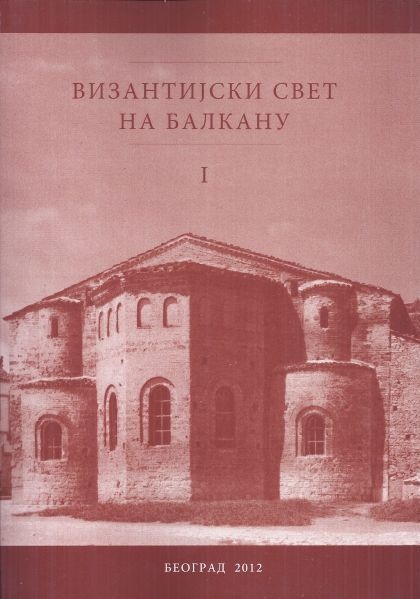Белошева опатија архиђакона Стефана - рефугијум Домбо и Баноштор
Beloš’s Abbey Of Stephen The Archdeacon — Refugium Dombo And Banoštor
Author(s): Janko Maglovski
Subject(s): Historical Geography, Local History / Microhistory, 6th to 12th Centuries, 13th to 14th Centuries
Published by: Vizantološki institut SANU
Summary/Abstract: In scientific treatise so well as in readings held by occasion on feasts it was considered as most probable, by now even regarded as a proved fact, the Monasterium Bani (Banov Manastir) had its site in area of contemporary village Banoštor. Recently granted statements about history and archeology of this part countryside of Srem the possibility to discuss those opinion again. In this article the author points some remarkable mistakes out. As main one seems to be related to the origin of the name for contemporary village Banoštor. Its name, as it was helden with, derives not from the name of the Benedictine abbey founded by Ban Beloš mentioned in Hungarian historical sources as Monasterium Bani. In fact its name comes from notion, economic one, willa monasterii Bani, i.e. the village with man contributed to the Monasterium Bani. One other misleading mistake was about the archeological site Gradina in Novi Rakovac, correctly recognized as refuge Dombo but quite wrongly identified with abbey of St. George of Dombo (St.Georgius de Dombo). The name Dombo for this small refuge for local peasants, proofed by documents and geographical maps, came in fact after its builders, inhabitants of nearest village Dombovo being obligated to erect it in hurry. After elimination of this two cardinal misunderstandings in interpretation of Hungarian documents author pays attention to well known historical sources of Turkish Empire serving to show that the oldest findings on the site Gradina were remains of abbey of Archdeacon Stephan founded by Ban Beloš. Revised reading of Hungarian sources dictates the necessity for making a clear difference of old term Monasterium Bani (1309.) from the Hungarian toponym Banmonostra (1476). Shoves that in historical note in proprio fondo suo, qui appellatur Keu (1198) so well as in Civitas de Ku que alio modo Monasterium Bani nominatur (1309) the name Ke (Keu, Ku) is to be understood as name of a region. Not as the name for a place within that region. This area Ke (Petrik) extended somewhere from Sremska Kamenica to Banoštor or Koruška on the very bank of Danube, right one. The kind of rough mistakes, recognized in papers, required an exact proof of significance of few single terms of mediaeval Latin language. It was necessary, as the first, to grasp real meaning of the phrase in proprio fondo suo as well as the fundo suo, written down by the very end of 12. century. Then, it was necessary too, to understand in a correct way the words civitas, castrum and villa. An acceptable and trustworthy explication of them will result with better explanation of since long times used historical sources. More than one century ago, Hungarian scholar D. Csanky extracted some twenty sentences or parts of them in order to testify the old existence of contemporary village Banoštor. His understanding of the terms villa and civitas in sense of classical Latin as denotation for village and town was due to many mistakes. The term civitas was written down in a document at the year 1309. The exact meaning of both terms offers Glossarium ad Scriptores Mediae et Infimae Latinitatis, Auctore Carolo Dufresne, Domino Du Cang. Correct acceptance of mediaeval phrases containing the word civitas was explained with: “Civitas, Urbs Episcopalis, cum cåterå Castra vel oppida dicerentur…”. In this explanation some difficulties can be caused by understanding of phrase Urbs Episcopalis, if the notion urbs is accepted in other way than as centrum, seat, residence (of episcope, episcopate) as Csanky did. Another phrase brought by Csanky in his capital work about Hungarian mediaeval topography is Villa monasterii Bani, from a document dated in the year 1309 too. In Glossarium of Du Cange one can find a correct explanation for the mediaeval Latin word villa. After quoted examples for older meanings of word he adds a citation: “Villas, hodie, non quomodo Latini praedia rustica; sed complurium in agris mansionum vel ådium collectionem appellamus”.
Book: Византијски свет на Балкану I-II
- Page Range: 77-95
- Page Count: 19
- Publication Year: 2012
- Language: Serbian
- Content File-PDF

